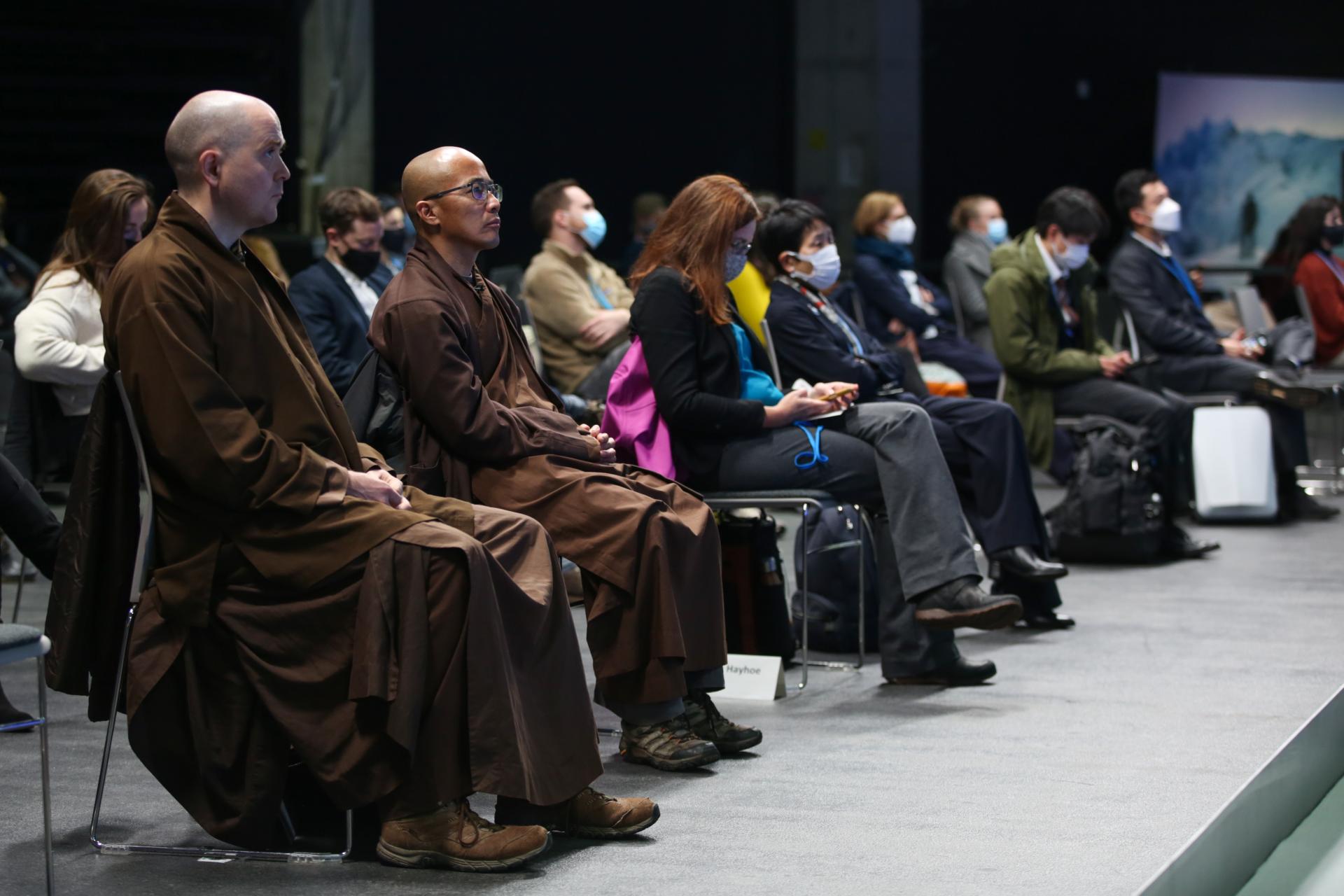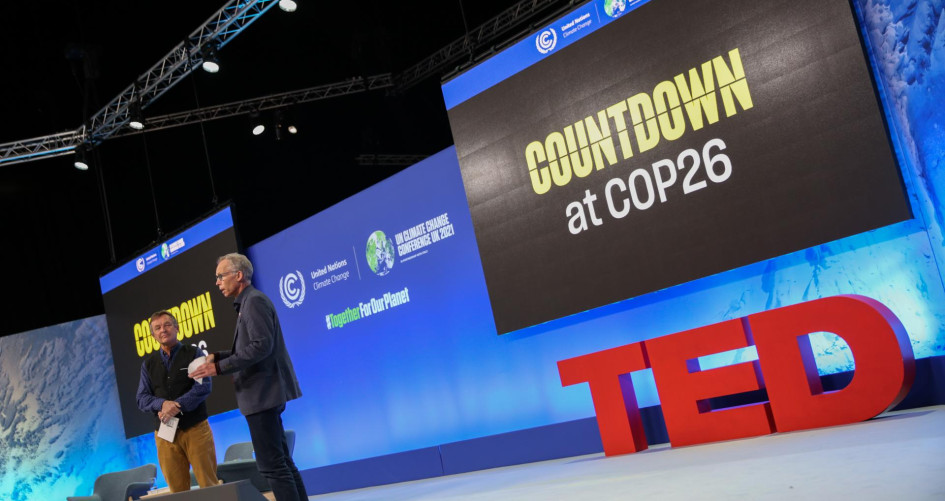Countdown at COP26 is a collaboration between TED and Future Stewards which highlights possible solutions to the climate crisis. Over three evenings at the Climate Action Hub, a variety of speakers talked about the challenges and – more importantly – the solutions that we can all work towards. All three nights illustrated that there is a huge amount of ingenuity, as well as drive and ambition out there – all traits necessary if we are to move towards a net zero world.
Night One
The first night focused on energy and featured one of the world’s most renowned climate scientists; a legendary investor who has co-written a compelling book about climate action; a climate activist and author; and a renowned environmentalist.
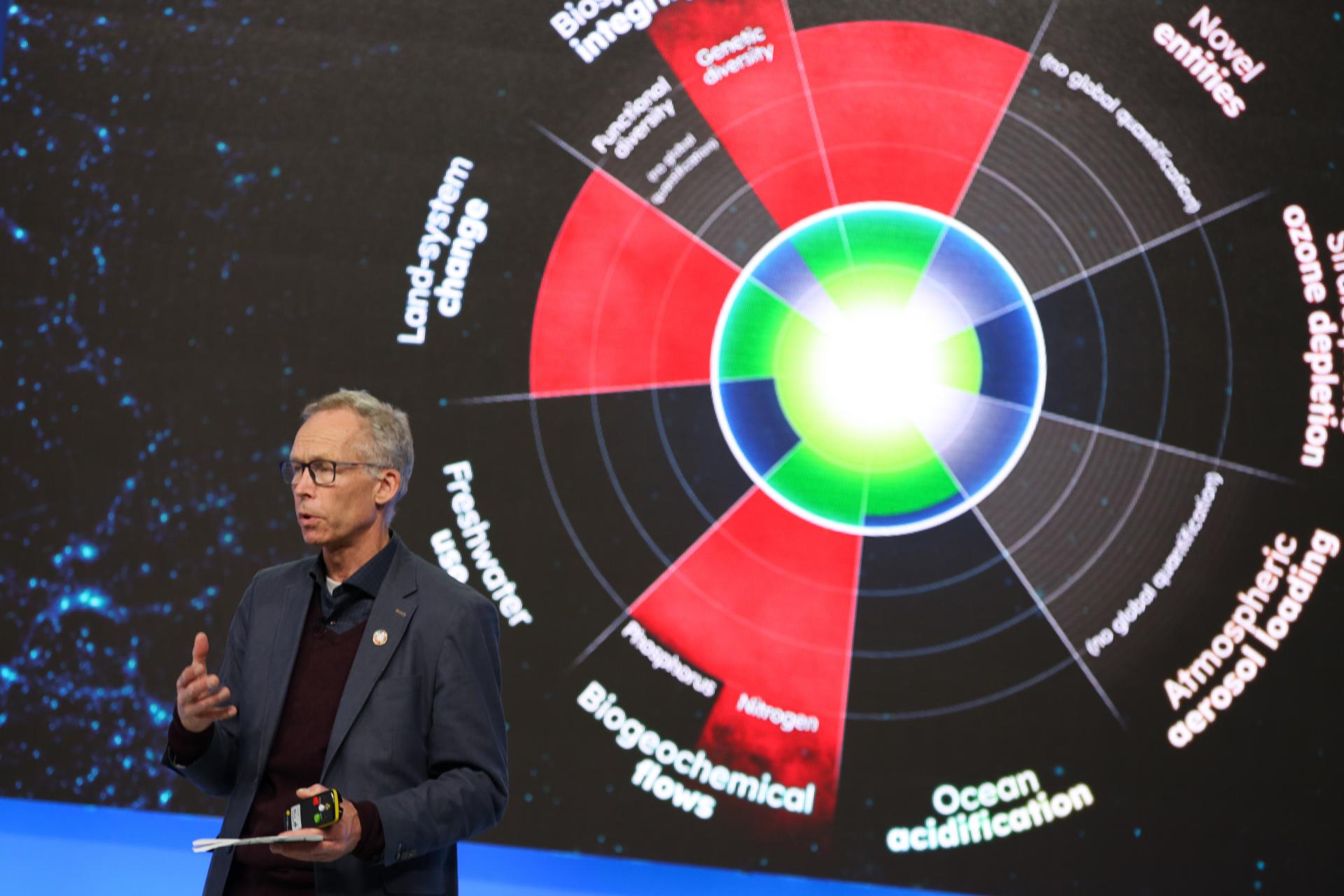
There are three key messages: the IPCC assessment is a ‘code red’ – we have never had so many assessments confirming we are deep in crisis. This is the alarm bell and it has gone off so many times. We have had six IPCC assessments, which is like 30 years of us pressing the snooze button and failing to act. The sixth assessment is the Sleeping Beauty of assessments: we have to wake up now and act.
One insight from science is that 1.5 degrees is still possible, the window is still open from an earth science perspective, but is it still feasible from a political perspective?
We are quite uniquely placed, as for the first time in COP history we are talking about the pace of change and not fighting about whether we have a problem or not. We still have an uphill journey, but we are at least seeing integrated policies. We are starting to see a momentum that’s not enough but it is at least beyond incremental.
Johan Rockström, Earth systems scientist, on the state of climate
The plan is total societal transformation. There are six big goals: electrify transportation; decarbonise the grid with wind and solar; fix our food systems and reduce our beef and dairy consumption and reduce food waste; protect nature and stop deforestation; clean up our industrial practices, in particular the way we make steel. The sixth goal is the hardest technical problem of all: direct air capture, and use natural means to remove the carbon we can’t remove with technology. And we need to do all of these six things all at once.
My message to business world is that the transition to the clean energy economy is underhyped – it is the greatest economic opportunity of our lifetime and if we fail, the cost will be huge. For example, there are 1 in 5 premature deaths due to pollution. If we achieve our objectives we can unlock tremendous health and economic prosperity as we transition to the clean energy economy. We see signs of how costly that will be – we saw €30 billion worth of flood damage in Europe in the past year alone. How much more suffering do we have to ensure before we understand it is cheaper to save the planet than to ruin it?
Climate change amplifies inequities. Those who have done the least suffer the most. The US must decarbonise first to show world it can be done and to drive down the cost. US, EU and China will have to fund the energy transition to cleaner energy. We should look at climate crisis as the humankinds greatest opportunity to tackle global inequity.
John Doerr, venture capitalist, co-author of Speed & Scale: An Action Plan for Solving our Climate Crisis Now
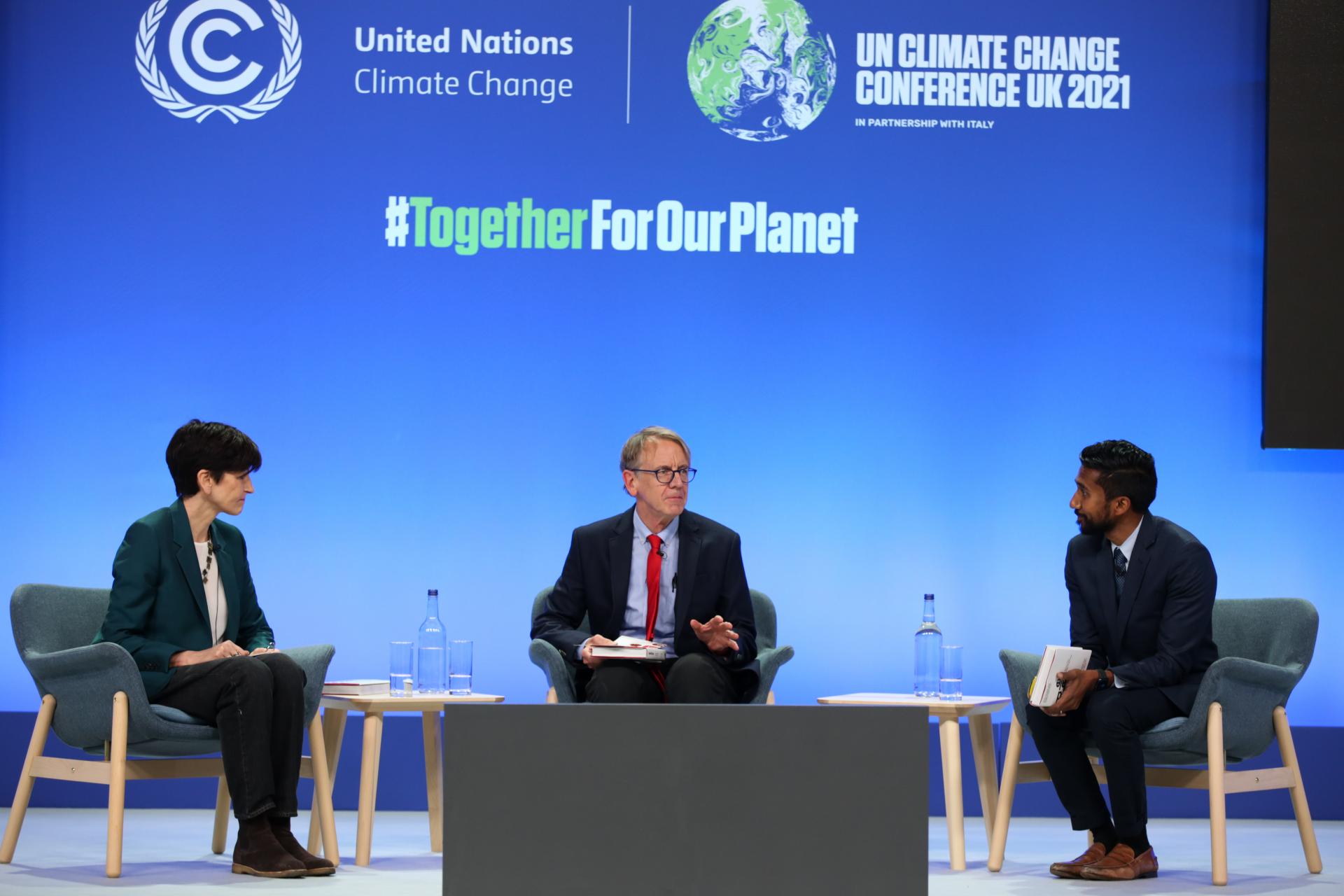
We have to get to zero faster, we have to pull on a set of accelerants and we have to win the policy arguments and the politics. Commitments need to turn into action in our home countries, while shareholders rise up in the boardroom, voters voting, while we drive down the cost of technologies and invest in R&D to venture capital.
We have 80 per cent of the solutions that we need. Solar and wind are at record low prices. Lithium ion prices dropping too. We need to scale up the things we need now. We need to invent more. We need to invent better batteries or better nuclear technology. Regards air travel we need to invest in carbon neutral fuels and SAF but they are still too expensive right now. We will need a lot of innovation to cut the second half of those carbon emissions, that we need to.
Ryan Panchadsaram, engineer, investor and co-author of Speed & Scale: An Action Plan for Solving our Climate Crisis Now
The world generates 25 trillion hours of electricity every year, which is why we need to replace fossil fuel plants with clean energy. One third is already clean and clean generation is growing. We are on track to 25 pedawatt hours by 2050.
We don’t need to change the electricity systems, we need to build an entirely new one, one that is fives time bigger than the current one. This mindset needs to go beyond electricity generation. Addressing climate change means building a new world, one in which energy is healthier and cheaper and everyone has access to it, a world with longer lives; ultimately a better world.
Solomon Goldstein-Rose; Climate author, on cleaning the electricity grid
The core of the Earth is the same temperature as the sun, and it is the Earth’s crust that keeps this incredible heat source invisible. We don’t have to drill far to reach temperatures that we would need to power the world for all of civilisation. So, how do we make this happen?
There are teams of innovators right now working on figuring out on to tap this enormous heat source below us. I am not talking about geothermal somewhere in Iceland, I am talking about making geothermal energy accessible everywhere in the world. We have new technology like directional drilling which enables us to reach precise locations miles underground. We are now in the middle of a geothermal renaissance, with more start-ups setting up in the past 18 months than in past ten years combined.
Jamie C. Beard; Environmentalist, on geothermal energy
You can watch the first night’s event here
Night Two
Night two focused on nature, youth and technology and featured an NGO using AI to track emissions; an activist who chairs a remarkable non-proliferation initiative; and the chairman of one of the world’s biggest shipping companies, who is revolutionising maritime emissions.
It’s incredible that in 2021, we still ask polluters how much they pollute and then add up those numbers. It’s amazing every country in the world has agreed to this process. We need more information and we need it much quicker, it should not take years to report. There are countries that have not had an emissions inventory in the past twenty years. We need to know what is driving emissions and we cannot keep relying on the polluters to report their pollution. If we want to get serious about climate change, we need better tools. We need something with really detailed information that is open and transparent and free.
There are so many free and public satellite images available today and it is possible to get photos every few days of every major power plant in the world. We have teamed up to scan this visual inventory every few days and figure out how much they are polluting. We can switch to thermal infrared and see which ones are hot. We are aiming bigger however, and we want to see if we can track all the human emissions across the entire planet.
We are sharing them all in a giant database called Climate Trace, as we now have properly global systems that are available for everyone. Satellites have come down in cost, while big data and AI costs have come down even more.
All of these experts are sharing everything so everything is cross validated and shared with the public. We are doing this for transparency – the heart of the Paris Agreement is that countries are meant to be able to trust each other but there is a lot of self-monitoring and a lot of countries cannot afford to monitor.
Our next step is making every single emitting asset in the world visible, so not just on a national level, but for every company and factory in the world. I have spoken to asset managers who are collectively investing 43 trillion in net zero but they need to manage and measure are those emissions reductions really happening. The days of hiding emissions are over.
Gavin McCormick, Co-founder of the Climate Trace coalition, on monitoring and measuring greenhouse gas emissions
According to the latest IPCC report, coal, oil and gas are responsible for 86 per cent of all carbon dioxide emissions in the past decade. Our governments are regulating emissions but not the production of fossil fuels. The majority of emissions that are trapped in our atmosphere today come from three products: oil, gas and coal. Behind our backs, the fossil fuel industry has been growing production and locking in emissions. I wanted to understand what frameworks exist to decide who gets to produce what and how much.
I read the Paris Agreement and the words ‘fossil fuels’, ‘oil’, ‘gas’ and ‘coal’ did not appear once! The fossil fuel industry has been successful in making itself invisible. The fossil fuel industry CEOs know they will have to wind down production, but they are hoping that unproven technology such as carbon capture storage will allow them to increase production. The maths doesn’t add up. We are on track today to produce 120 per cent more fossil fuel emissions than we should burn if we want to stay on track with Paris Agreement.
The markets today are distorted by tax breaks and fossil fuel subsidies as a result of the power and influence of the fossil fuel industry. They no longer deny climate change, but they have moved from denial to delusion that technologies that are not yet proven or cost competitive will fix things in the future. Today we are spending trillions of dollars to increase the production of products we say we are transitioning away from. The world is spending financial and technical capital to dig up stuff we can’t burn and if we do it will burn us.
The Fossil Fuel Non Proliferation Treaty Initiative (FNPTi) will allow the winddown to happen in a fair way. Work is now under way to create a global fossil fuel registry. We can’t rely on the market to dictate the transition as if we do, it will be an unmanaged decline. We need financial management and divestment, and we cannot let governments off the hook. The wealthy countries need to act first, which means no more fracking or oil pipe lines or drilling.
101 Nobel laureates (including the Dalai Lama) have endorsed the principles of a fossil fuel non-proliferation treaty; as have 2,500 academics and scientists and multiple cities such as Sydney. Barcelona, Los Angeles and Toronto. What we have learned from studying landmines and nuclear non-proliferation is that the journey matters. A treaty will help us wind down the production of fossil fuels and will help us achieve the goals of the Paris Agreement. It is a big, bold idea but at this moment in history we need big, bold ideas.
Tzeporah Berman (Chair of the Fossil Fuel Non Proliferation Treaty initiatitve)
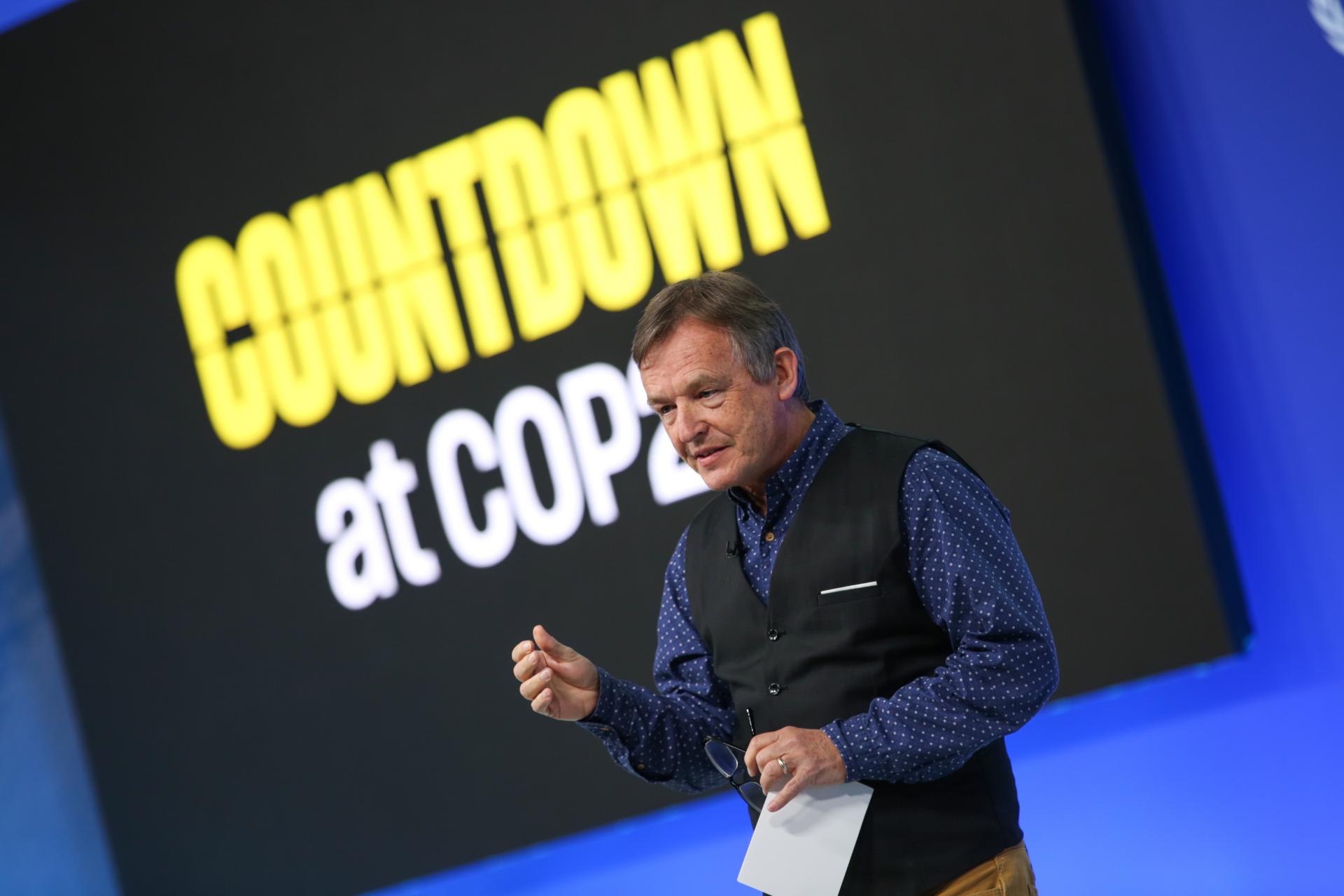
More than 9 per cent of emissions come from transporting goods around the world. So, in 2018 Maersk’s management team made a commitment to make the company carbon neutral by 2050. In order to do that we needed to invent a zero carbon container vessel by 2030 so we could replace our 750 vessels by 2050. We had achieved more than 40 per cent reduction per container vessel in the ten years up to 2018, but we were reaching the limit of what was possible. Sails can reduce fuel consumption, but cannot give the productivity needed. Batteries would take up 60 per cent of the vessel. Liquid Natural Gas is a fossil fuel, and so will not lead to zero carbon shipping.
We set up the Global Centre for Zero Carbon Shipping in Copenhagen, and filled it with specialists in energy, chemicals and engineering. And now, less than three years later, we have found a solution. We can convert green electricity to green hydrogen via electrolysis. The benefit to this is that fuel is produced at a normal temperature and so can be used in a combustion engine. We can retrofit existing engines and so can achieve zero carbon shipping much earlier than we would have done otherwise.
This solution also help with the storage issue with renewables – it can turn the excess energy into a liquid fuel. At the moment however, It is two to three times more expensive than current bunker fuel. We need to scale these solutions to get the cost down. Even at that cost, a pair of trainers sent from Asia to Europe would just cost 5 cents more. I urge governments to show leadership and implement a global price on CO2 now. Then we can focus all of our attention on the real issue which is not the price but the scale.
We have the technology needed to create a sustainable future. We need leadership to get us there faster. On July 1st we ordered first vessel for green fuel. Two months later we ordered eight more. What seemed an impossible dream has become reality seven years ahead of the original plan. It is time for use to pursue big dreams even if they seem impossible.
Jim Hagemann Snabe (Chairman of Maersk, on decarbonizing maritime shipping)
You can watch the second night’s event here
Night Three
Night three focused on nature and land, and featured a renowned ecosystem scientist, a carbon removal expert, the most celebrated science fiction author in the world, and an inspiring indigenous leader who has been on the frontlines of the battle against climate change.
We are losing our soils at an alarming rate, and with it we are losing its fertility. Without that soil, it’s going to be hard to feed close to 10 billion people in 2050. Having more carbon in soil, as carbon accumulates, soil can hold on to more water and more nutrients, building resilience that helps them protect them against a changing climate.
The great thing about carbon rich soils is that they help farmers and their crops to defend themselves to a changing climate. That is a huge win for the people that grow our food, a win for climate and a win for us. Let’s help our planet by looking down to the ground.
Jane Zelikova, ecosystem scientist, on soil as carbon sink
Why do we need carbon removals? Isn’t it easier to stop putting carbon in the atmosphere in the first place. And the answer is: yes, of course it is. But the problem is we have left it too late and we can’t now do it fast enough. I have been working on climate change for 20 years and I was shocked when I found this out but the science is utterly clear: If we are going to have a fighting chance to stay at 1.5 degrees – the ‘safe limit’ – we have to have carbon removals. We need both reductions and removals.
And it looks like we’re going to need a lot. Carbon removals are our only chance, not only to stop the problem getting worse, but to make it better. Even 1.5 degrees is not actually safe. We’re not even there yet and we’re already experiencing the fires, the floods, the storms and the droughts. With carbon removals, we can take our historic emissions out of the air, clean up the mess we’ve made and give the world a chance to heal.
The people I talk to about carbon removals go one of two ways: they think of trees or big futuristic machines, nature versus tech, green versus chrome. This is not the right way to think about them, as the world is full of ways to store carbon. You can store it in trees, you can store in soils, in the ocean, in buildings, you can store it in rocks and deep underground. Everyone one of those approaches relies on some combination of natural resources and human ingenuity – we are going to need nature and technology.
I still find it astonishing that every single tree and plant on Earth has made its entire body directly from carbon in the air. They are incredible carbon capture machines and we are going to need a lot more of them. But we have to put trees in places where they foster biodiversity, where they don’t compete with food for land and where science and technology tell us they are likely to survive, even in the face of climate change.
Direct air capture involves massive electrical fans blowing a lot of air over a carbon capture device. It marries technology with geology, as you capture the CO2 and bury it deep underground. One carbon capture plant being designed in Texas aims to take one million tonnes of Co2 from the atmosphere every year.
Gabrielle Walker, carbon removal thinker
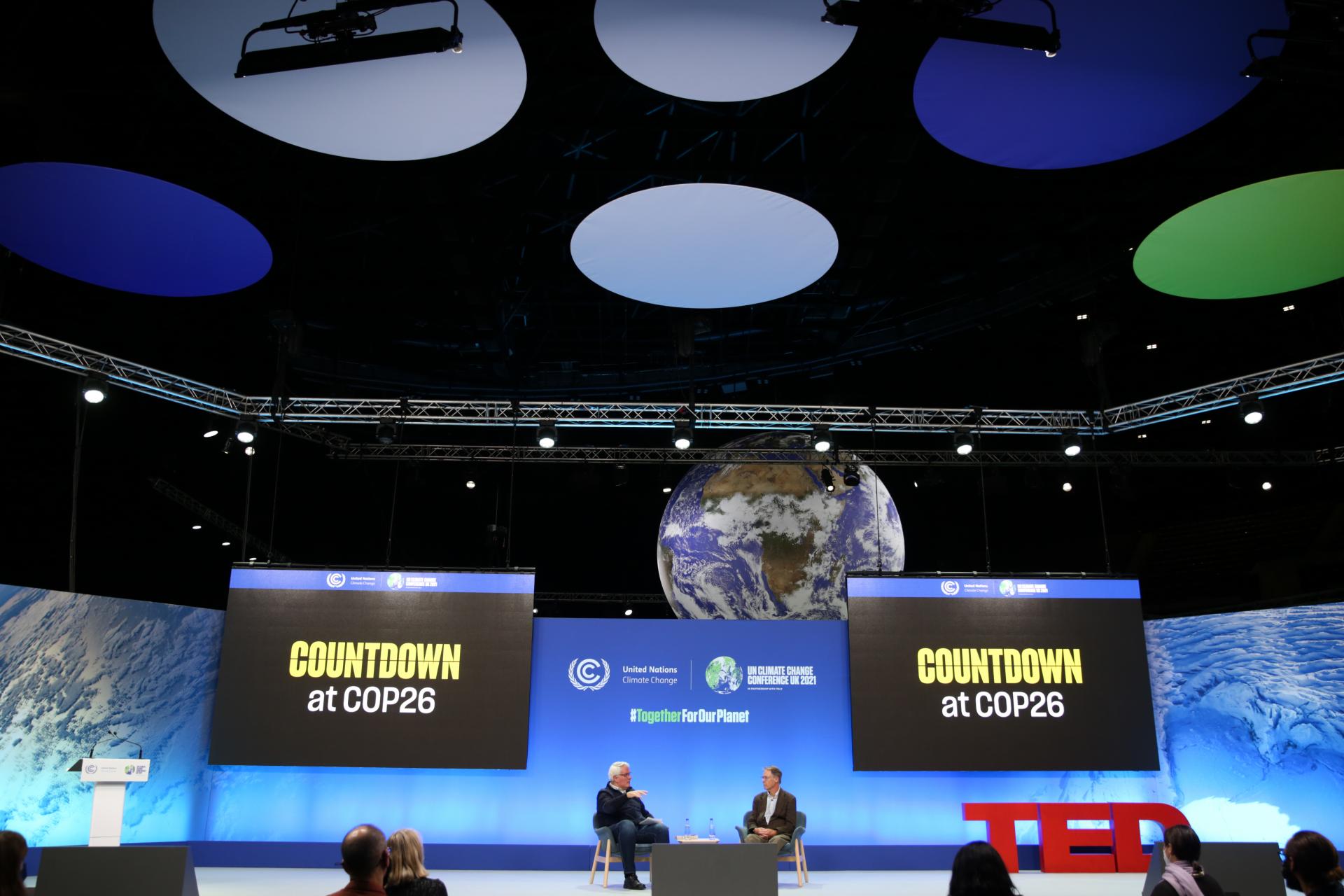
What is a science fiction writer doing here at COP? Well, COP26 is a science fiction exercise. My science fiction is mainly looking at what is happening right now and putting that in the futuristic scenarios and pointing it out to people.
I can’t tell you [how people at a COP40 would look back at this COP], it’s too big to understand. This is my first COP and I’m overwhelmed. COP26, the meeting in itself is a success. The whole world is watching, the sense of intensity since IPCC report and since the pandemic, there is a rising sense we have got to do something and meetings like this are one of the best things we have to coordinate it worldwide.
This COP will go down in history and Glasgow will stick out, like Copenhagen, Kyoto and Paris. Glasgow will also stick out.
Kim Stanley Robinson, author of The Ministry for the Future
I never went to university, the forest is my teacher. The Pikenanis, the wise, both women and men are our scientists. We as indigenous people are the ones whose eyes are open, we know what is happening. For the Waorani people, the forest is our home, it is our life, it is full of life, full of knowledge.
More than 25 per cent of the Earth’s surface is protected by Indigenous peoples. This includes nearly half of the world’s forests. The forest is our home, the forest gives us life, food, nourishment, spiritual connection. But the arrival of roads, the arrival of colonization, the arrival of evangelical missionaries, the arrival of oil companies, has destroyed our forest.
I have met other indigenous people who live in the north and were first contacted by colonization, invasions and roads. It is very sad. The forests in the Amazon continue to burn, the oil continues to spill, and the miners continue to enter our territory, stealing our gold and the colonizers continue to invade, in order to feed societies abroad. I want it to be known that this is directly harming us.
We are taking risks, not only for our children but for your children as well. For future generations. What we do, what we love, what we respect is not only for our people, the lives of Indigenous peoples, but your lives as well, the lives of the entire world we are living in. We want them to listen and wake up and decide that enough is enough. So that they no longer enter our territory to exploit and pollute. Mother earth is not waiting for us to save her, but to respect her. And we as Indigenous peoples expect the same.
Nemonte Nenquimo, indigenous leader from Ecuador
You can watch the event here.
